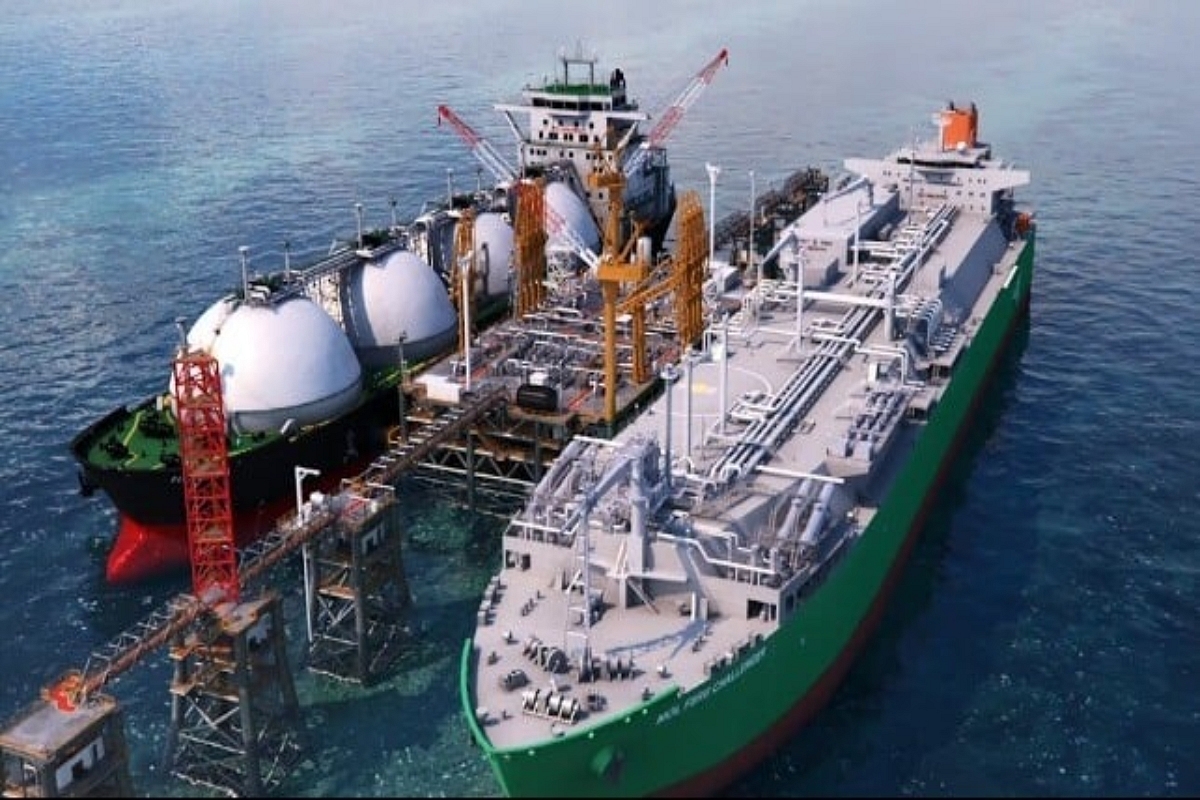
Introduction:
Liquefied natural gas (LNG) has been touted as a cleaner and more efficient alternative to traditional fossil fuels, prompting India to invest heavily in import terminals. However, a recent report paints a worrying picture: most of these terminals are operating far below capacity, raising questions about the viability of these investments and the future of gas in India’s energy landscape.
Analysis:
The article highlights several key issues contributing to the underutilization:
- Rapid capacity expansion exceeding demand: LNG terminal capacity has doubled since 2015, reaching 46 million tonnes per year, while domestic gas consumption has only grown by 23%. This mismatch has left many terminals idle.
- Inadequate pipeline infrastructure: Connecting terminals to demand centers remains a challenge, hindering gas flow and limiting utilization. Industry experts believe improved pipelines will be crucial for boosting utilization rates.
- Pricing volatility and lack of long-term contracts: Unlike Dahej, which benefits from long-term contracts with Qatar, some terminals face volatile prices and uncertain demand, discouraging investment and utilization.
Impact on Retail Investors:
This news could have mixed implications for retail investors depending on their portfolio composition:
- Potential beneficiaries: Companies involved in pipeline infrastructure development and gas distribution could see increased demand for their services as the government prioritizes connecting terminals to consumers. Look for companies like GAIL India, Adani Gas, and Petronet LNG to potentially benefit in the long term.
- Potential losers: Investors in companies heavily reliant on underutilized terminals could face downside risks. While Dahej, operated by Petronet LNG, might be relatively insulated due to its long-term contracts, other terminal operators like Ennore Port Ltd. and Gujarat LNG Ltd. might experience pressure on their stock prices.
Impact on Industries:
The underutilization of LNG terminals could have broader implications for various industries:
- Power: Gas-fired power plants could face fuel shortages and operational challenges if LNG supply remains constrained. This could lead to higher electricity prices and potential reliance on more polluting sources like coal.
- Fertilizers: Fertilizer companies heavily dependent on LNG imports could face higher production costs, impacting their profitability and potentially affecting agricultural input prices.
- City Gas Distribution: The ambitious city gas distribution program aiming to provide clean cooking fuel to millions of households could be hampered by limited gas availability from underutilized terminals.
Long-term Benefits & Negatives:
The long-term outlook for India’s LNG market depends on addressing the current challenges:
- Benefits: If infrastructure bottlenecks are addressed and domestic gas demand grows as expected, efficient utilization of LNG terminals could contribute to a cleaner energy mix, reduced dependence on imported oil, and potentially lower energy costs in the long run.
- Negatives: Continued underutilization could lead to stranded assets, financial losses for investors, and missed opportunities for environmental benefits. Additionally, overreliance on long-term contracts might limit flexibility and adaptation to changing market dynamics.
Short-term Benefits & Negatives:
In the short term, the underutilization is likely to have negative consequences:
- Economic impact: Lower utilization means lower revenue for terminal operators and potentially higher costs for gas consumers. This could impact economic growth and investment in the energy sector.
- Government pressure: The government might face pressure to re-evaluate its LNG strategy and potentially reconsider future investments in terminal expansions.
Companies that could Gain:
- GAIL India: As the largest gas distributor in India, GAIL stands to benefit from improved pipeline infrastructure and increased gas availability.
- Adani Gas: Adani’s focus on city gas distribution and its growing presence in the eastern India market could position them well for future demand growth.
- Pipeline infrastructure companies: Companies like Larsen & Toubro and Indian Oil Corporation could see increased demand for their services as the government prioritizes pipeline development.
Companies that could Lose:
- Ennore Port Ltd.: The underutilization of their LNG terminal could put pressure on their stock price and financial performance.
- Gujarat LNG Ltd.: Similar to Ennore Port, Gujarat LNG could face challenges due to their dependence on a single underutilized terminal.
- Companies heavily reliant on coal: If gas demand picks up as expected, companies heavily invested in coal-based power generation could face long-term challenges.
Additional Insights:
- The global energy landscape and LNG prices: Fluctuations in global LNG prices and potential disruptions in supply chains could further complicate India’s LNG utilization challenges. Diversifying import sources and negotiating more flexible contracts could be crucial for mitigating these risks.
- Technological developments: Advancements in gas storage and transportation technologies could offer new solutions for increasing utilization rates and overcoming pipeline limitations. Exploring alternatives like virtual pipelines and LNG bunkering could also be beneficial.
- The role of policy and regulation: Government policies incentivizing domestic gas consumption, promoting city gas distribution, and streamlining pipeline permitting processes could play a crucial role in boosting demand and utilization.
Conclusion:
India’s underutilized LNG terminals present a complex challenge with far-reaching implications for investors, industries, and the nation’s energy landscape. Addressing this challenge requires a multi-pronged approach involving infrastructure development, policy reforms, technological advancements, and strategic diversification. While short-term hurdles and uncertainties remain, successfully overcoming these challenges could pave the way for a more efficient, sustainable, and gas-powered future for India.
Citation:
Sanjeev Choudhary. “Most LNG Import Terminals in India Underutilised.” The Economic Times, Dec 13, 2023. https://economictimes.indiatimes.com/industry/energy/oil-gas/most-lng-import-terminals-in-india-underutilised/articleshow/105941986.cms